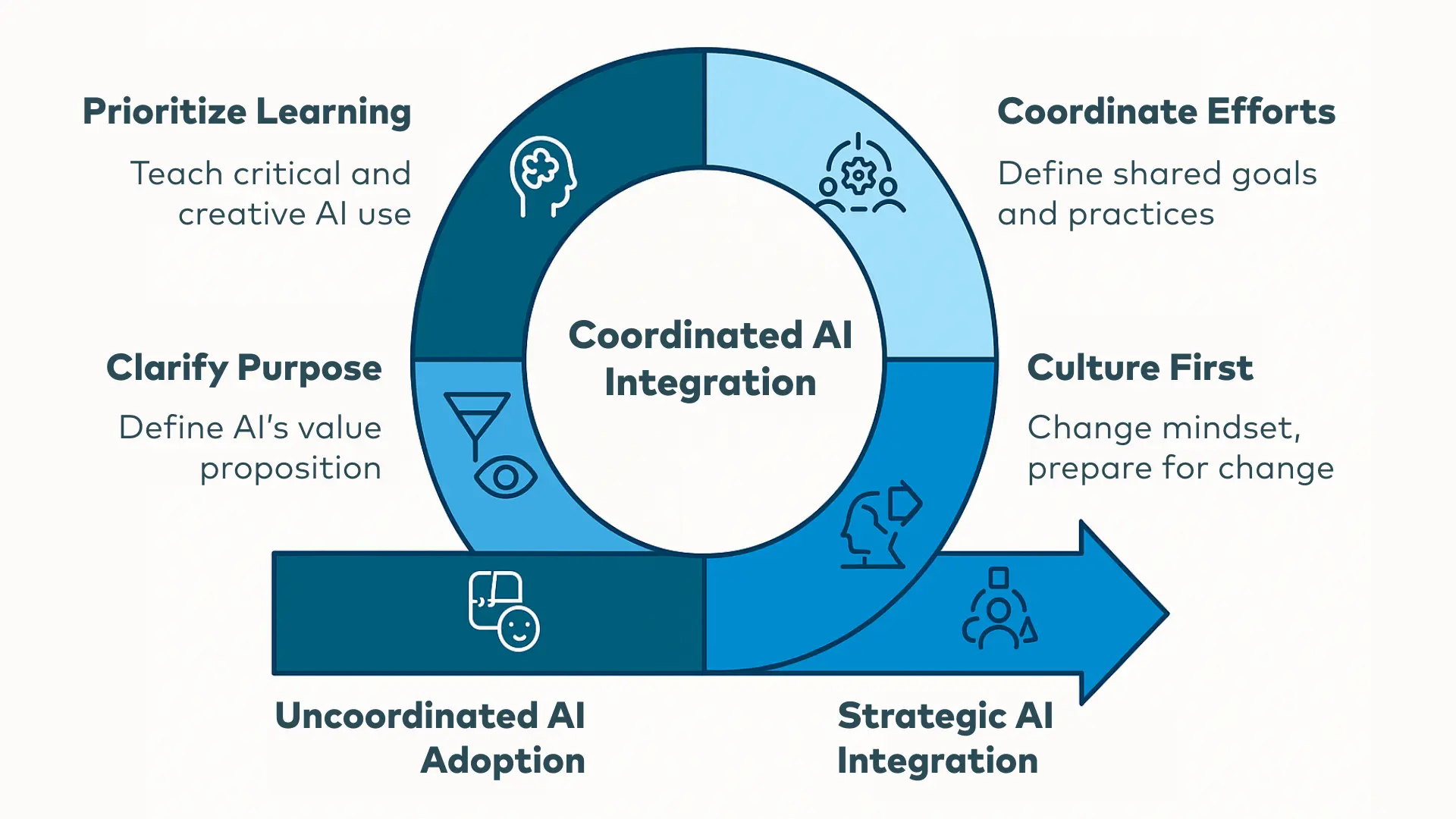Let’s be honest: AI is everywhere now. Every pitch deck, every product roadmap, every “next-gen” strategy has at least one bullet point that says something like “leveraging AI for efficiency and innovation.”
But most of it is noise.
Entrepreneurs (and their teams) are under pressure to adopt AI not just to improve the business, but to look like they’re improving the business. That pressure can be blinding. It’s easy to start thinking that throwing some generative tools into the workflow will somehow unlock exponential growth. But here’s the thing most people don’t want to say out loud: AI, on its own, won’t save your business.
If anything, uncoordinated AI adoption might make things worse.
Culture Eats Algorithms for Breakfast

Real AI transformation doesn’t begin with tools. It begins with people, and more specifically, with the way people think, work, communicate, and decide things together.
When you introduce AI into your company, you’re not just changing the software stack. You’re reshaping workflows. You’re altering the DNA of decision-making. Job roles shift. Teams reconfigure. Ethics take on new complexity. Leaders can’t lead the same way they used to because information moves differently, and authority structures get blurred.
If you’re doing it properly, AI doesn’t just plug into your business, it changes the shape of it. That requires a cultural shift, and cultural shifts aren’t automatic. They take effort, clarity, and, most importantly, coordination..
Chaos in a Nice Interface Is Still Chaos
Here’s a common mistake: handing everyone access to AI tools and calling it innovation. It feels empowering on the surface: you’re letting people explore, experiment, be autonomous.
But in practice, this often results in fragmentation.
One team uses AI to generate copy. Another builds custom GPTs. A third avoids AI altogether because they don’t trust it. Soon, no one is on the same page. No standards, no benchmarks, no shared learnings. Just isolated experiments with no strategic direction.
You’re not building momentum. You’re splintering your efforts.
Real AI adoption requires coordination. It requires a company-wide understanding of what these tools are for, what they’re not for, and how they plug into the bigger picture. This isn’t about top-down control, but about shared intention. Otherwise, your AI efforts are just a collection of disconnected apps and one-off wins, with no compounding value.
Invest More in Training Humans Than in Buying Machines
Here’s the paradox of AI: the smarter the tools become, the more important human intelligence is.
Yes, AI can process data faster. It can write passable emails, summarize reports, even generate code. But none of that matters if your people don’t know how to work with these tools in a meaningful way.
It’s not enough to know which buttons to press. Your team needs to understand how to ask better questions. How to interpret and validate AI outputs. How to recognize when the machine is wrong, biased, or dangerously confident.
Too many companies blow their budget on software licenses and integrations, leaving almost nothing for training. But if you don’t teach your team how to use AI critically and creatively, you’re not scaling capability. In fact, you’re just adding complexity.
Think of it this way: every dollar you spend on AI should come with a matching dollar (or more) spent on upskilling the humans who’ll use it.
Purpose Before Hype
There’s a question every entrepreneur should ask before bringing AI into the business: What’s the point?
Not in the abstract “We want to be more efficient”, but in the concrete. What customer problem are you solving better with AI? What business bottleneck are you unblocking? What new capabilities are you unlocking, not just automating?
If you can’t answer that clearly, then AI is just a marketing gimmick. Another buzzword in a sea of jargon.
Purpose is what separates meaningful transformation from digital theater. It aligns your efforts, sharpens your messaging, and ensures that AI is in service of something real. Without it, you’re just reacting to trends instead of building something resilient.
So Where Do You Start?
If you’re serious about adopting AI, here’s what matters most:
- Start with culture. AI adoption is as much about behavior as it is about tools. Help your team unlearn old assumptions and prepare for new ways of working.
- Coordinate your efforts. Don’t let each team figure it out on their own. Define shared practices, goals, and use cases. Create space for experimentation, but give it a framework.
- Prioritize human learning. Build training programs that go beyond the surface. Teach your people to think with AI, not just use it.
- Clarify your purpose. Know exactly why AI matters to your business and your customers. Make that your North Star.
AI is not going to lead your business. You are. And your team (provided it’s properly equipped, aligned, and supported) is still the most powerful engine of transformation you’ve got.
The tools are here. But the future is still human-made.

